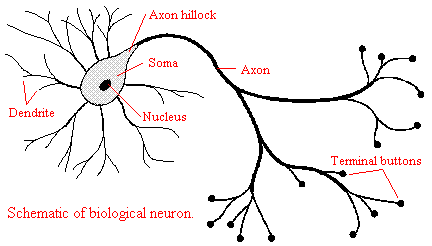Публикации
| Main » Articles » In English » Brain and Behaviour |
Nervous system
| The nervous system is a very important part of our organisms. I helps us
to interact with the environments in terms of sensing it , interpreting
signals from it and generating responses to these signals.There is only
one kind of multicellular animals without nervous system and these are
the sponges, all the other animals have a NS, which is a network of
electro - chemically active cells, which are specialized to communicate
with each other. The NS could be two types- centralized and
uncentralized. The uncentralized system is the simplest form of NS.
Animals with this kind of NS are are the hydra and the sea star.Some
animals, which are structurally simple like the flatworm, leech or
insect have far more complex NS- centralized. However, the most complex
NS is that of the vertebrates. It consists of two clearly separated
parts - central NS and peripheral NS. The central NS includes the brain
and the spinal cord and the peripheral includes everything else. The
peripheral NS itself consists of two parts- somatic and autonomic NS.
The somatic NS has input from sense organs and it activates skeletal
muscles. A person has a voluntary control over the somatic NS, The
Autonomic NS has no input and a person does not have control over it. It
controls muscles and glands in the body ( e.g. heart
beating,breathing).The Autonomic NS has two parts - sympathetic and
parasympathetic. The first one is responsible for body`s response of the
"fight or flight" condition, while the second one is responsible for
body`s rest and maintenance. The main function of the NS is to control and coordinate behavior. The NS enables us to react quickly and with high precision to to the things that happen around us. There are three basic processes in the NS. The sensory signals must be detected , then these signals must be interpreted and the motor signals must be sent to the muscles or glands. Any activity of muscles or glands must itself be registered and fed back into the nervous system. There are some things that we can do without a brain. These are involuntary reflexes, like the monosynapticreflex called "the knee-jerk reflex".This is a very simple form of detection and interpretation, which motor command is performed only by two neurons. This happens because inside each muscle fibre , specific sense organs activate a sensory neuron when the muscle is quickly stretched .Then their axons enter the spinal cord(via dorsal root), connecting directly with motor neurons,which send their axons out (via ventral root), activating the same muscle from which signals originated (causing it to contract). An important note is that all through our body ,monosynaptic reflexes work to "resist"or "dampen" quick stretching of the skeletal muscles , in order to provide smooth and stable movement and even a monosynaptic reflex can have additional synaptic connections.There is more complex processing in the spinal cord , they are called polysynaptic reflexes. These are sensory & motor neurons connected via one or more inter-neurons (withdrawal reflex) ,sometimes more flexible arrangement can show some simple forms of learning.Spinal cord neurons can even generate complex movement patterns such as walking, but cannot initiate voluntary movements- these patterns are only elicited in response to appropriate stimulation. Every type of voluntary control that is more complex than this needs a brain. Neuron  
Polysynaptic reflex arc 
Monosynaptic reflex arc- knee-jerk reflex 
| |
| Category: Brain and Behaviour | Added by: vessie (26/Mar/2010) | |
| Views: 6570 | Comments: 2 |
| Total comments: 2 | |
|
| |

